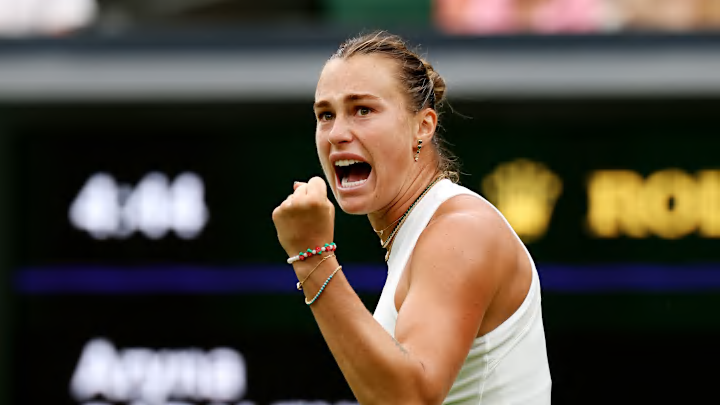Aryna Sabalenka will likely never have a clearer path to winning Wimbledon. The WTA No. 1 had never made a final at the grass-court major before, but with most other top-10 seeds being upset so early in the tournament, she appeared destined to reach her first final and likely win the event.
The Belarusian's quarterfinal opponent was 37-year-old Laura Siegemund, who had not won a title since 2018 and was ranked outside the top 100 entering Wimbledon. Siegemund also has nowhere near the power that Sabalenka has, and that was an issue for the Belarusian.
It is sometimes easier to take on someone who tries to hit the ball back with as much bombast as the serving player does. High-stress and highly-paced points are better for a big hitter, just as a batter doesn't have to generate as much power when they connect solidly with a fastball.
Aryna Sabalenka continues her run to a potential Wimbledon title
Whether there was a level of overconfidence or Siegemund was better prepared for the match, the Belarusian came out slightly flat and let the German dictate points. in the first set. Siegemund was shockingly even winning more points of Sabalenka's first serve than the Wimbledon top seed was. The German was also playing exceedingly efficiently with 13 winners and just eight unforced errors.
Siegemund took set one 6-4, getting three breaks off Sabalenka, and that appeared to wake Sabalenka up from her stupor for a short time.
The second set began with Sabalenka holding serve and then breaking Siegemund. Jumping out to a 2-0 lead was seemingly all the Belarusian needed to make quick work of the second set to set a decisive third. It wouldn't be so easy, though.
Siegemund got a break of Sabalenka and then held with ease to get back to even. As Siegemund's second serve was sometimes arriving to Sabalenka at less than 80 mph, there was no reason the Belarusian could not simply tee off, but she couldn't. The match was mystifying.
Sabalenka appeared to settle in after Siegemund evened the set, though. She took the remaining four games in the second set to take it 6-2. While each game stayed a struggle for the Belarusian, she seemed to understand that she needed to hit even harder to put more pressure on the German.
But not quite. Siegemund got a break early in the third set to take a 3-1 lead, and simply needed to keep holding serve to pull the shocking upset. She wasn't outhitting Sabalenka, but she was playing a smarter brand of tennis. She was changing her serve up enough to keep the Belarusian off balance even if the second serve was relatively slow.
But perhaps the biggest and most surprising issue for Sabalenka was that through two and a half sets, Siegemund was handling the Belarusian's serve so well. Each game was a challenge for Sabalenka, and this had to be a shock.
Sabalenka was able to get the break back and even the set at 3, but Siegemund got the break right back to lead 4-3. Through that game, Sabalenka had only two winners in the third set but 13 unforced errors. She was not playing winning tennis.
One might have expected Siegemund to tighten up so close to beating Sabalenka, though. She had never reached a Grand Slam semifinal in singles before, and never made it past the second round at Wimbledon. Her success in doubles (she won the US Open with Vera Zvonareva in 2020) was not going to help her.
Serving at 4-3, she missed several shots long, and it did appear nerves were getting the best of her at times. Sabalenka was able to get the break and then held easily to lead 5-4 and force Siegemund to hold again. She wasn't able to as Sabalenka got another break to take the match 4-6 6-2 6-4.
